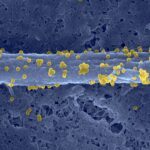Lien vers Pubmed [PMID] – 29571579
Int. J. Food Microbiol. 2019 Jan;288:58-65
Globally, vibrios represent an important and well-established group of bacterial foodborne pathogens. The European Commission (EC) mandated the Comite de European Normalisation (CEN) to undertake work to provide validation data for 15 methods in microbiology to support EC legislation. As part of this mandated work programme, merging of ISO/TS 21872-1:2007, which specifies a horizontal method for the detection of V. parahaemolyticus and V. cholerae, and ISO/TS 21872-2:2007, a similar horizontal method for the detection of potentially pathogenic vibrios other than V. cholerae and V. parahaemolyticus was proposed. Both parts of ISO/TS 21872 utilized classical culture-based isolation techniques coupled with biochemical confirmation steps. The work also considered simplification of the biochemical confirmation steps. In addition, because of advances in molecular based methods for identification of human pathogenic Vibrio spp. classical and real-time PCR options were also included within the scope of the validation. These considerations formed the basis of a multi-laboratory validation study with the aim of improving the precision of this ISO technical specification and providing a single ISO standard method to enable detection of these important foodborne Vibrio spp.. To achieve this aim, an international validation study involving 13 laboratories from 9 countries in Europe was conducted in 2013. The results of this validation have enabled integration of the two existing technical specifications targeting the detection of the major foodborne Vibrio spp., simplification of the suite of recommended biochemical identification tests and the introduction of molecular procedures that provide both species level identification and discrimination of putatively pathogenic strains of V. parahaemolyticus by the determination of the presence of theromostable direct and direct related haemolysins. The method performance characteristics generated in this have been included in revised international standard, ISO 21872:2017, published in July 2017.

